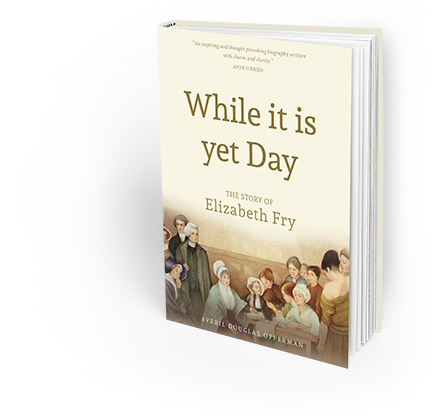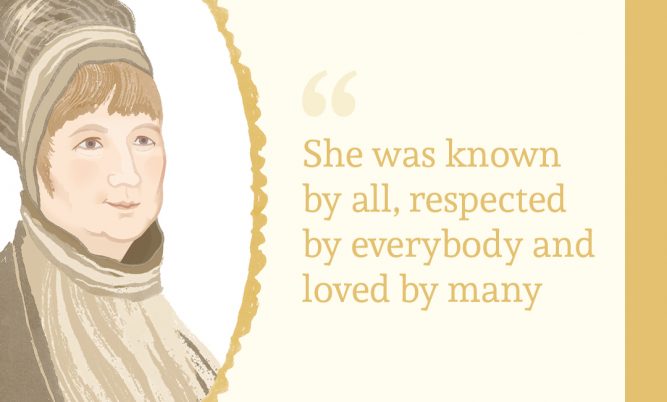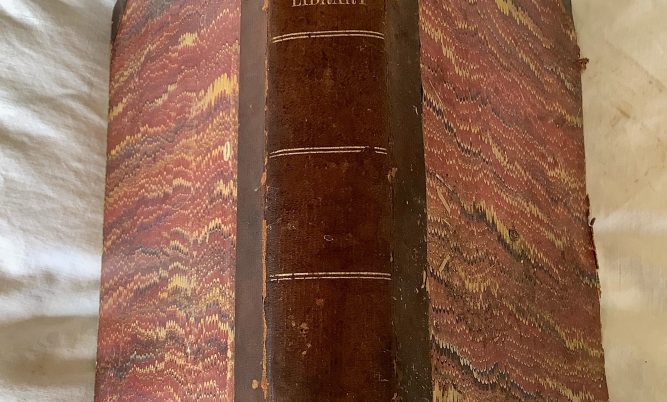The draft of what was to become While It Is Yet Day sat on my desk as other work stacked up beside it. I was longing to begin the search for Janet Payne Whitney, author of the book I had so loved as a child, but I had to wait until I had some free time. And I needed a lot of that because as it turned out, it was a long, time-consuming search. A search that took me around the world and back to my father, maybe even to my grandfather, in Dublin – where it all began for me.
I started at Friends’ House in London where Janet’s papers, journals and diaries are stored. The historian Ted Milligan and Janet’s sister, Richenda C. Scott sorted them together after her death in 1974. Although very helpful, no one there at the time could tell me what had become of Janet; there appeared to be no literary estate. They told me that Janet’s book about Elizabeth Fry was out of print and had last been published in August 1972 by Ayer & Co Publishers, New Hampshire in the USA where she had gone to live.
Gradually with the help of many people both in the UK and USA, I pieced together some of her life but found no trace of a literary estate. She went to America in 1917 when she married George Gillett Whitney. He was an artist and became Director of Fine Arts at Westtown Quaker School [founded in 1799] in Chester County, Pennsylvania from 1920 – 1956. They lived in Westtown for 35 years and were renowned for their warm English hospitality at Bacon Cottage on the campus.
Although born in Tokyo, George was educated in England and studied art in London before becoming a pupil of N.C. Wyeth, the American artist and illustrator. A founder of the Chester County Arts Center in West Chester, George was also an accomplished singer, folk dancer and tennis player. Whereas he was tall and shy, his wife was diminutive and gregarious and they were a devoted couple. Their son, W. Gillett Whitney, known as Gil, was born in 1920 and spent much of his life in the Westtown area. He graduated from Westtown in 1938 and attended college at Harvard, Oberlin and Michigan; his interests included radio technology, particularly television, and general semantics.
Janet taught Quakerism at the school and encouraged students to develop a love of poetry through her poetry-reading group called The Treasure Seekers. Later she became involved in local politics and in 1950, and again in 1952, stood as the Democratic candidate for the Pennsylvania State Senate. Although defeated on both occasions she continued to encourage women to take an active interest in politics. She was known in Washington and President Truman was so interested in her that he invited her to visit him in the White House before he left office in 1953.
George and Janet enjoyed travelling and in 1937 visited the International Exposition of Art & Technology in Modern Life in Paris with their son, Gil. They came to England to visit relatives and explored Bronte country, Stonehenge, Janet’s native Chilterns in Buckinghamshire and various Quaker haunts. In Ireland, they visited friends and George’s sister enjoyed the Wicklow Mountains and Glendalough.
In 1946 George took a sabbatical in the UK and in 1962 they returned when Janet was awarded a research place at Woodbrooke Quaker Study Centre in Birmingham to write a biography of George Fox. They remained in England for six years and spent most of the time in one of Janet’s favourite places, a cottage in St Mawes in Cornwall which she visited often.
By this time, Janet’s health was starting to deteriorate and she died six years after returning to Westtown, before she had time to complete the Fox biography. She died at Friends’ Hall, West Chester on 19th December, 1974 aged 83. She had lived nearby at Hickman Home before moving to the Hall. Her husband was bereft without her and died less than five years later, also in West Chester. Their son, Gil lived to be 83 and died in his home town in May 2003.
Although I was getting information about Janet’s life, I was no nearer to tracing her literary estate. By this time, I had been in touch with: seven US publishers who threw me from one to another around in circles; the USA Library of Congress/Copyright records plus their Genealogy department; the Quaker Graduation Centre, Pendle Hill; Yale University Library; the Copyright Licensing Agency; the Society of Authors; Authors Licensing and Collections; the UK Public Lending Rights and many others.
After all this frustration, I was put in touch with the executor of Gil’s estate. He turned out to be a cousin of a friend in Ireland and related to two well-known Irish Quaker families, the Pimms and the Bewleys. He knew nothing of Janet’s literary estate but suggested I contact a cousin of George Whitney, the delightful Sylvia Havilland. Sylvia, a retired English professor also living in Pennsylvania was not aware of Janet ever having a literary estate. But she turned out to be related to a branch of my family in Dublin! So finally I came a full circle and discovered that probably my grandfather, Senator James G. Douglas had given Janet’s book to my father who passed it on to me.
Tagged with: Finding Janet • inspiration • Janet Whitney • research • writing



